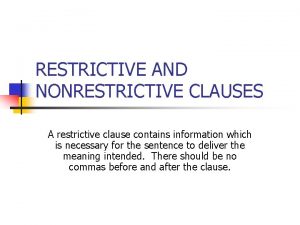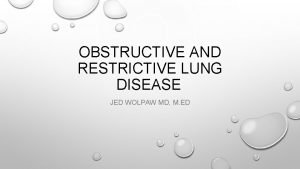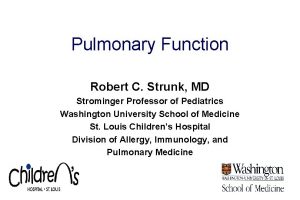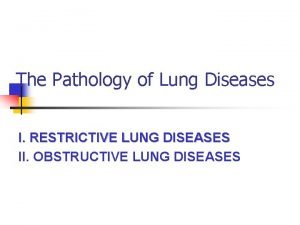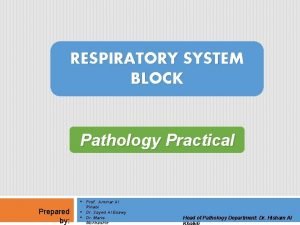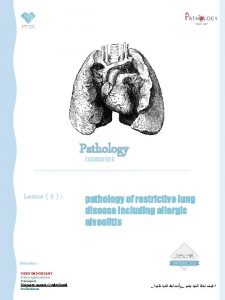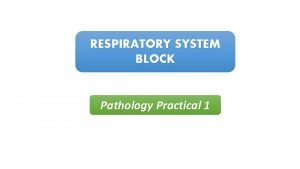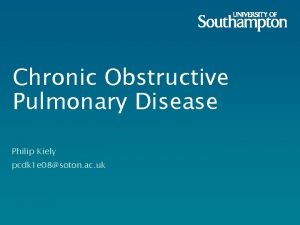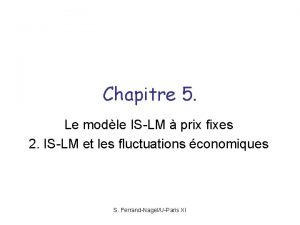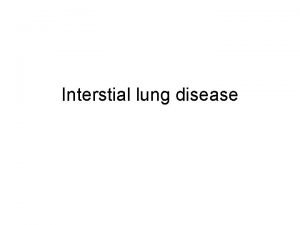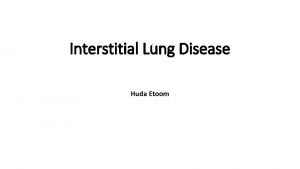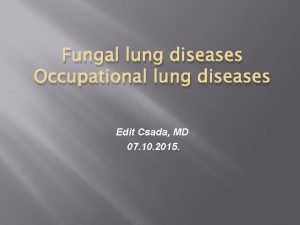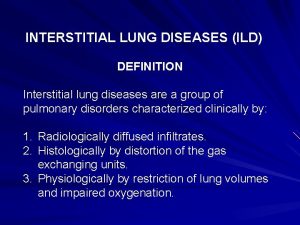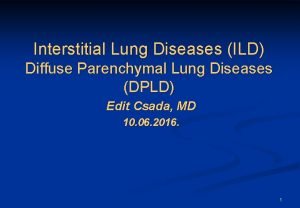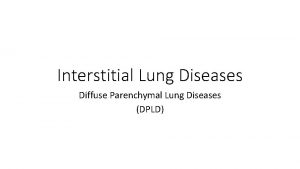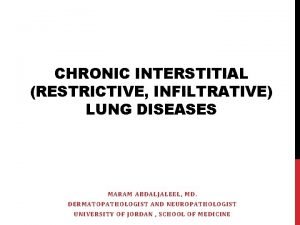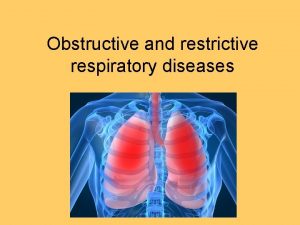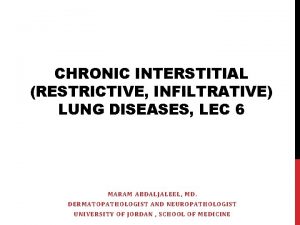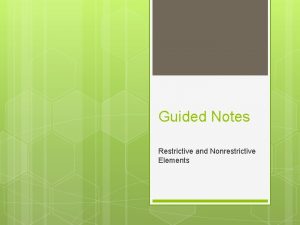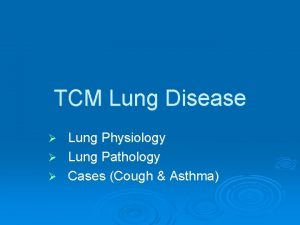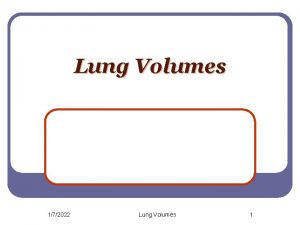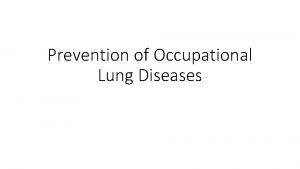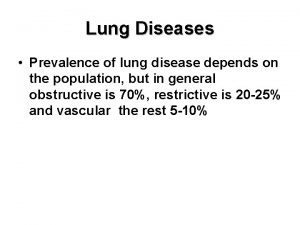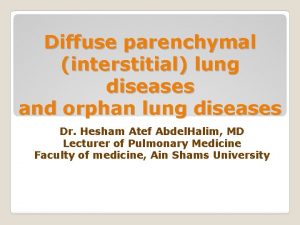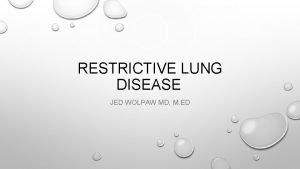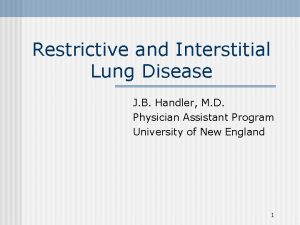Restrictive Lung Diseases Restrictive Lung Diseases 1 2
























- Slides: 24

Restrictive Lung Diseases

Restrictive Lung Diseases 1. 2. 3. 4. 5. Adult respiratory distress syndrome Sarcoidosis Asbestosis Neonatal respiratory distress syndrome Idiopathic Pulmonary fibrosis

Acute respiratory distress syndrome 1. Def: Diffuse damage primarily to type 1 pneumocytes + capillary: followed by injury of type 2 cells and endothelium. 2. Cause: gm - ve Sepsis, trauma, lung infection etc. 3. Pathogenesis: 1. Diffuse alveolar damage: DAD 2. In E coli infection this DAD is mediated by free radicals from Neutrophils.

Respiratory membrane Alveolar sac

Hyaline membrane

ARDS Morphology: – Gross: lung is diffusely firm, airless, and rubbery. – Micro: Hyaline membrane Clinical: – acute dyspnea, cyanosis, hypoxemia. – X ray: white out : bilateral lung opacity – Unresponsive to 100% oxygen treatment. – Mortality is between 30 -40%.

Intra alveolar hyaline membrane: fibrin and cell debris → reduced oxygen diffusion. Whiteout End

Neonatal respiratory distress syndrome Reduced surfactant due to defective pneumocytes 2. Clinical similar to ARDS

Sarcoidosis

Sarcoidosis Definition: disease with non caseating granulomas, can involve any organ. Most common presentation. – Bilateral hilar lymphadenopathy and /or lung involvement. Hyper-calcemia is present ( due to high 1, 25 dihydroxyvitamin D by sarcoid macrophage).

Morphology: Microscopy : – Non caseating epithelioid cell granulomas in all effected organs with giant cells. – Hilar node: These lympnnode may undergo calcification: egg shell calcification.

Giant cells contain these structures Schuamann body Concentric calcification Asteroid bodies

Clinical Course of Sarcoidosis Asymptomatic, discovered incidentally (many cases). Dry cough/ night sweat/ fever. Eye involvement: Mikulicz syndrome: corneal opacity, blindness. Skin involvement: erythema nodosum (painful erythematous plaques or rash).

Sarcoidosis : diagnosis Final diagnosis is by lung LN biopsy or biopsy of the skin or eye lesion. Helpful: CD 4/CD 8 ratio >2. 5 ( in bronchoalveolar lavage lymphocytes) – PPD negative. End

Asbestosis Cause: Asbestos fibers Morphology of lung: Early: diffuse interstitial fibrosis in lower lobe and fibrous pleural plaque [parietal pleura]. Late stage: honeycomb lung. Complications: bronchogenic carcinoma, mesothelioma.

Asbestos fibers : morphology Asbestos body or Ferruginous body which is positive with Prussian blue. – Amphibole (thin and straight) and serpentine (curly. Flexible, common ). – Present in extracellular tissue in lung interstitium (initial ingested by macrophage that eventually dies off).

Asbestosis : morphology Ferruginous body which is positive with Prussian blue. They arise when macrophages attempt to phagocytose asbestos fibers.

Late change: “Honeycomb" lung. It is the end stage of all restrictive lung diseases

Pulmonary hypertension

Pulmonary hypertension → right ventricular hypertrophy. Primary Secondary More common 1. Multiple pulmonary emboli 2. Increased blood flow ( left-to-right shunt). 3. COPD and restrictive lung disease : these cause hypoxia induced vasoconstriction.

Primary Pulmonary Hypertension Etiology: unknown Morphology: plexiform pulmonary angiopathy and medial hypertrophy.

Secondary Pulmonary Hypertension Morphology: – Medial hypertrophy – Or presence fibrotic organized emboli in vessels with narrow lumen.

Complications of Pulmonary Hypertension Right ventricular hypertrophy → Right heart failure or cor pulmonale

Thank you
 Restrictive and nonrestrictive
Restrictive and nonrestrictive Obstructive vs restrictive lung disease
Obstructive vs restrictive lung disease Obstructive and restrictive lung disease
Obstructive and restrictive lung disease What is a restrictive lung disease
What is a restrictive lung disease Difference between obstructive and restrictive lung disease
Difference between obstructive and restrictive lung disease Restrictive lung disease
Restrictive lung disease Enfisema pulmonar tem cura
Enfisema pulmonar tem cura Restrictive lung disease
Restrictive lung disease Bronchopneumonia vs lobar pneumonia
Bronchopneumonia vs lobar pneumonia Reduced relative clause example
Reduced relative clause example Adjective dependent clause
Adjective dependent clause Terminology relating to restrictive practice
Terminology relating to restrictive practice Least restrictive environment examples
Least restrictive environment examples Dr philip kiely
Dr philip kiely Relative pronouns rules
Relative pronouns rules Restrictive clause definition
Restrictive clause definition Unjustified restrictive gatekeeping
Unjustified restrictive gatekeeping During which austere and restrictive period
During which austere and restrictive period Dlco 判讀
Dlco 判讀 Modle
Modle What are the organizational barriers to communication
What are the organizational barriers to communication Restrictive and nonrestrictive adjective clauses
Restrictive and nonrestrictive adjective clauses Politique monetaire restrictive
Politique monetaire restrictive Define least restrictive environment
Define least restrictive environment Endorsing a check to someone else
Endorsing a check to someone else
